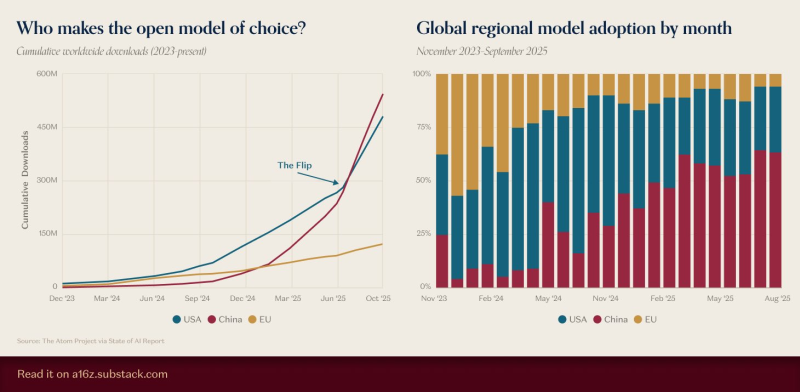● Tech analyst Balajis recently announced that the long-anticipated "AI flippening" has arrived—China has now surpassed the United States in total downloads of open-source AI models. Data from The Atom Project shows Chinese models overtook American ones by mid-2025, marking a significant shift in global AI adoption.

● Balaji describes this as "AI overproduction"—China's deliberate strategy to flood the market with free, open models across every domain from computer vision to robotics. The goal? Commoditize the software layer, crush Western profit margins, and dominate the hardware layer where China already has structural advantages in manufacturing self-driving cars and smart devices.
● This follows China's familiar playbook: study, copy, optimize, scale, then undercut on price. The release of DeepSeek—a Chinese open-source model that briefly erased nearly $1 trillion from U.S. tech valuations—proved how disruptive this approach can be. The model's founder, Liang Wengfeng, has met with Xi Jinping and Premier Li Qiang, signaling Beijing treats AI leadership as a national priority.
● For Western AI companies built on subscription-based closed models, this creates a serious problem. How do you compete with free? The result could be compressed profits and a race to the bottom in pricing. There's also a policy angle: China embeds light censorship in its open models that's easy to bypass internationally—effectively exporting open AI globally while keeping domestic control.
 Eseandre Mordi
Eseandre Mordi

 Eseandre Mordi
Eseandre Mordi


